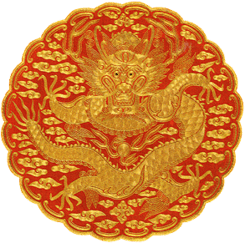Cheonmin
Cheonmin (Korean: 천민; Hanja: 賤民), or "vulgar commoners", were the lowest caste of commoners in dynastical Korea. They abounded during the Goryeo (918–1392) and Joseon (1392–1897) periods of Korea's agrarian bureaucracy.
| Class | Hangul | Hanja | Meaning |
|---|---|---|---|
| Yangban | 양반 | 兩班 | aristocrats |
| Jung-in | 중인 | 中人 | middle people |
| Sangmin | 상민 | 常民 | commoners |
| Cheonmin | 천민 | 賤民 | vulgar commoners |
| • Baekjeong | 백정 | 白丁 | untouchables |
| • Nobi | 노비 | 奴婢 | slaves or serfs |
| V・T | |||
| Cheonmin | |
| Hunminjeongeum | 천민 |
|---|---|
| Hanja | 賤民 |
| Revised Romanization | Cheonmin |
| McCune–Reischauer | Ch'ŏnmin |
Social class system
In the caste system in Korea, this social class was largely hereditary and based on certain professions considered "unclean" by the upper classes. This list of unclean professions included butchers, shamans, shoemakers, metalworkers, prostitutes, magicians, sorcerers, jail-keepers, and performers (like the kisaeng). Nobi (slaves) were servants taken from the cheonmin class to serve yangban (aristocracy) and royalty, but like slaves, they were considered the property of their owners and could be given away to other high-ranking people.
Kisaeng, female entertainers for yangban, were in this class, educated but not respected by others in society. The hereditary nature of the caste system bred institutionalized discrimination and prejudice early on in Korea's history, as the cheonmin were barred from most forms of social advancement, including entry into government service or taking the gwageo civil service examinations.
The cheonmin, although a step above the traditional caste of untouchables or outcasts called the baekjeong, lived segregated lives, like the baekjeong, isolated from the rest of society and shunted away in ghettoes far away from the rest of society. While the cheonmin performed tasks that other Koreans considered unclean or undignified, they still had an essential function and role within dynastic Korean society. Their work as butchers, shoemakers, low-class entertainers, performing unclean jobs, provided services to the other classes that were unavailable from anyone else.
Legacy
While the class and caste system of dynastical Korea no longer exists and has largely disappeared in the modern era, remnants of such social discrimination based solely on one's occupation or a forebearer's previous line of work continue to shape traditional Korean thinking and values today.
Exception
In all the history of the Joseon Dynasty there are only a few extraordinary examples of a cheonmin who overcame their class status.
Choi Suk Bin gained the highest rank, just under the Queen, and became a Royal concubine. Choi Suk Bin, mother of King Yeongjo, who originally entered the Palace as a musori or slave-girl. Due to his mother's low origins, Yeongjo suffered multiple attempts to his life when he was named Crown prince over his half brother. Although he was adopted by Queen Inwon and under her protection, many nobles were against a low-born son ruling the country as king.
Jang Geum (fl. early 16th century; family name Seo), originally an Uinyeo of the cheonmin class, became the first female Royal Physician in Korean history. According to the Annals of the Joseon Dynasty King Jungjong recognized Jang Geum's medical knowledge and entrusted her the royal care of all royal family members. King Jungjung therefore, promoted Jang Geum to become the third highest-ranking officer in the Court, and was granted the use of Dae (Korean: 대; Hanja: 大; RR: Dae; MR: Tae) (which means "great" in Korean) before her first name.[1][2][3]
See also
References
- "Daejanggeum (Jewel in the Palace)". Korea Tourism Organization. Retrieved 21 February 2012.
...only woman to serve as head physician to the King in the rigidly hierarchical and male-dominated social structure of the Joseon Dynasty.
- "Daejanggeum spurs continuing interest in royal court cuisine". Hancinema. 8 January 2009. Retrieved 21 February 2012.
Janggeum was a real person, mentioned in Joseon Dynasty annals who lived in Korea some 500 years ago.
- Shin, Myung-Ho (2008). "Annals of Joseon History Brought To Life by the Digital Era" (PDF). Archived from the original (PDF) on 26 September 2013. Retrieved 21 February 2012.
When the producer Lee Byung Hoon was working on the historical drama “Heo Jun,” he came across a noteworthy passage while searching the Annals of the Joseon Dynasty for information about Heo Jun (1539-1615), a Joseon court physician who attended the royal family. It was a statement by King Jungjong (r. 1506-1544) who declared: “No one knows my illnesses as well as Jang Geum.”
